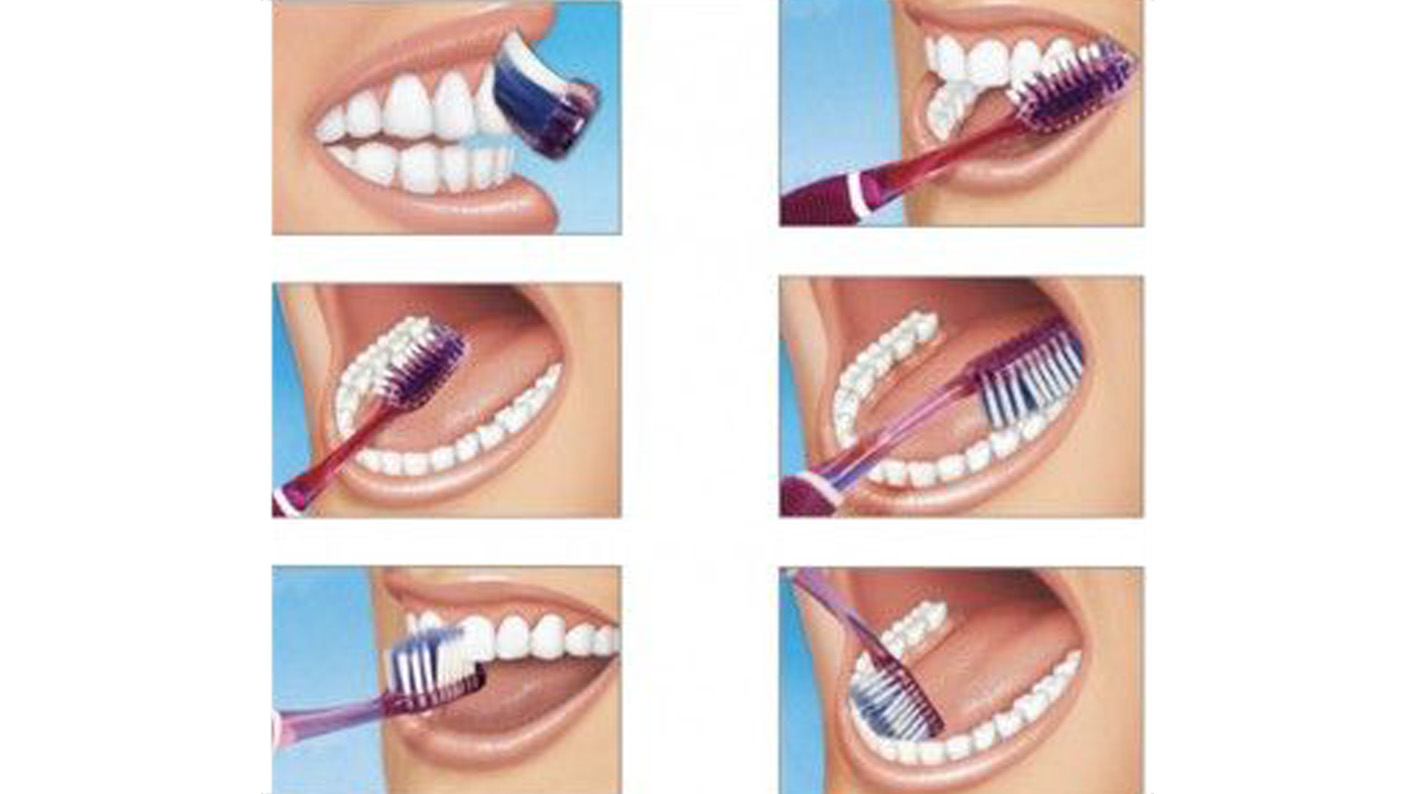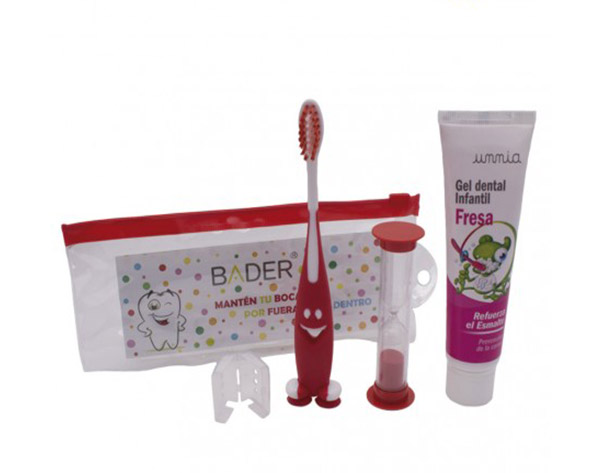Getting children to have good oral hygiene is a challenge. Therefore, many times, this represents a problem during childhood for the fathers, mothers and/or adults responsible for a minor. Either for fear of the appearance of cavities or for wanting the teeth to grow strong and healthy.
In the following article, we will provide you with all the necessary information about the oral health of children. Their care, habits and tooth brushing. Added to the importance of fluoride application and why not, how often is it advisable to visit a pediatric dentist. Interested? Well, keep reading!

First steps for proper oral hygiene for children.
Dental care begins at birth. Even if the baby does not have teeth, the oral cavity should be cleaned once a day. It is recommended to take advantage of the moment of the bath, use a clean cloth, moistened with water or a silicone thimble and thus treat the gums, tongue, inside of the cheeks and palate.
When the boy or girl has the first temporary or “milk” tooth (this usually happens after approximately 6 months of life), it is mandatory to start oral hygiene twice a day - morning and especially at night. Toothbrushing in children is effective only if it is done by an adult. However, as it is necessary for the baby and/or child to acquire the habit, it is recommended that they play for one minute brushing the teeth and that the adult perform the hygiene for another minute.
* IMPORTANT: Parents and/or caregivers are responsible for the hygiene and care of the minor's mouth until she has the motor skills and self-sufficiency to do so. This usually happens between the ages of 7 and 10. Then, until adolescence, the supervision of the responsible adult is recommended, especially in night brushing.

Toothpastes, toothbrushes and mouthwash: everything you need to know when choosing these products.
For oral care to be effective, it is necessary to incorporate products that contribute to good oral hygiene practice. Starting with brushing, there are different types of brushes with different bristles, sizes and hardness. Which one should we choose? Starting from the premise that it is extremely important not to damage the gums, it is preferable to use a small brush according to the age and size of the child's mouth, with soft or soft bristles. The effectiveness of brushing will depend on how it is used in the mouth, not on the force with which the bristles work.
Brief brushing guide:
- Place a small amount of toothpaste in the brush, we begin by imaginarily dividing the mouth in 4 and we will start with the upper part of the mouth, side 1 external face. We put the brush perpendicular to the tooth, slightly inclined towards the gum. The movement will be done from the last tooth to the blades, and from the gum downwards, not the other way around since we do not want to hurt the gum. Tooth by tooth will be passed and then repeat side 1 but internal face. The same procedure is repeated in the 4 parts of the mouth, both faces - internal and external.
- For the molars, horizontal brushing is done from front to back, from the last molar to the first and on the upper and lower molars.
- Finally, we will clean the tongue, the brush is placed perpendicular to it and we proceed to brush making sweeps from back to front.
- A final general rinse with a little mouthwash may be included to remove any remaining plaque or debris.
- The brush should be kept in good condition and free of dirt. It is advisable to change it every 2-3 months, since it is important that the bristles are in good condition.

In the previous paragraph we mentioned the use of toothpastes and mouthwashes. But can children use them? The answer is yes, as long as they are products that specify to be suitable for children and there is adult supervision, since there is a risk of toxicity in case of excessive use/ingestion.
Dental enamel is made up of hydroxyapatite, a compound that provides hardness to the tooth. The bacteria that we have in the oral cavity metabolize dietary carbohydrates and produce acids, so the hydroxyapatite will dissolve, weakening the tooth and forming cavities. This process can be prevented and reversed in its early stages by using compounds that have fluorine in their composition.
Topically, fluoride is incorporated into the tooth surface during brushing, binding to hydroxyapatite and producing a new compound, fluorapatite. Fluorapatite gives dental enamel greater hardness and protection as it inhibits the action of bacteria and prevents demineralization of healthy teeth, in fact it favors remineralization.
Consequently, toothpastes and mouthwashes are necessary products in dental hygiene. Its use is indicated topically, but during brushing, but here is the importance of supervision, accidental ingestion of them can occur, especially in children and this can trigger various pathologies, especially when the tooth is in process. developmental. Fluoride absorption after ingestion occurs by passive diffusion in the gastrointestinal tract. Once absorbed, it will be deposited in forming bones and teeth.
The toxic effect will depend on the age at which these products begin to be used, the amount used and ingested, and the concentration of fluoride in them. When these factors occur frequently, it can produce chronic poisoning that can trigger various pathologies such as dental fluorosis, increased bone density, gastritis, among others. However, this toxic effect can be avoided by respecting the amounts of product. Choosing toothpastes and mouthwashes suitable for children and supervising brushing.
Here we leave you this short summary, to highlight in the dental care of a child so that you can accompany him at all times.
For children ages 0-3: Use a gauze pad, silicone thimble, or infant toothbrush with 1000 ppm (parts per million) toothpaste. ) of fluoride ion, in an amount equivalent to a grain of rice or a small spot.
From 3 years of age, the amount of toothpaste with 1000 ppm fluoride ion should be equivalent to a pea or, to better unify the criteria, to the width of the toothbrush head. The fluoride ion concentration of the toothpaste will be determined based on the child's risk of caries and it will be the pediatric dentist who will recommend it to parents or caregivers.
From 6 years of age, the amount of toothpaste with 1450 ppm of fluoride ion, must again be equivalent to a pea or, to unify better the criterion, to the width of the head of the toothbrush. The fluoride ion concentration of the toothpaste may be increased up to 5000 ppm depending on the child's caries risk (active caries, incisor-molar hypomineralization, etc...) and it will be the pediatric dentist who will prescribe it to parents or caregivers.
Why is it important to take care of children's dental health?
Throughout their growth, children are prone to all kinds of oral diseases, whether due to diet, genetic or biological factors, or lack of care. Many of them can be prevented. For example, the most common and already mentioned, dental caries.
Caries, also known as dental cavities, is the destruction of tooth tissue caused by the presence of acids produced by plaque bacteria deposited on dental surfaces. There are different types of cavities, among the most common are:
- Crown cavities: they are the most common, presenting in both children and adults, and generally on the chewing surfaces or between the teeth.
- Root decay: As we grow older, the gums recede, exposing parts of the root of the tooth. Since the roots are not covered by enamel, these exposed areas can easily become infected.
- Recurrent cavities: It happens because these areas have a tendency to accumulate plaque, which ultimately causes the formation of cavities.
Now, how can they be detected? The dentist/pediatric dentist is the one who will be able to know with certainty if there is a presence of cavities or not. The first visit is recommended from the first year of age. And already the consultations, repeat them as indicated by the dental professional. However, they are usually 1 to 2 times a year.
How can I help prevent cavities?
- With a correct dental brushing, as mentioned before, at least twice a day and mouthwashes suitable for children.
- Go to the pediatric dentist. Preventive care is crucial to avoid having major problems in the future.
- Eat a healthy diet with special attention to foods with starches or sugars.
- Use dental products that contain fluoride, including toothpaste
In conclusion, instilling and guaranteeing oral hygiene in children is essential for healthy growth. It gives them self-esteem and represents a great opportunity to build beneficial bonds with themselves and with those who care for them.





